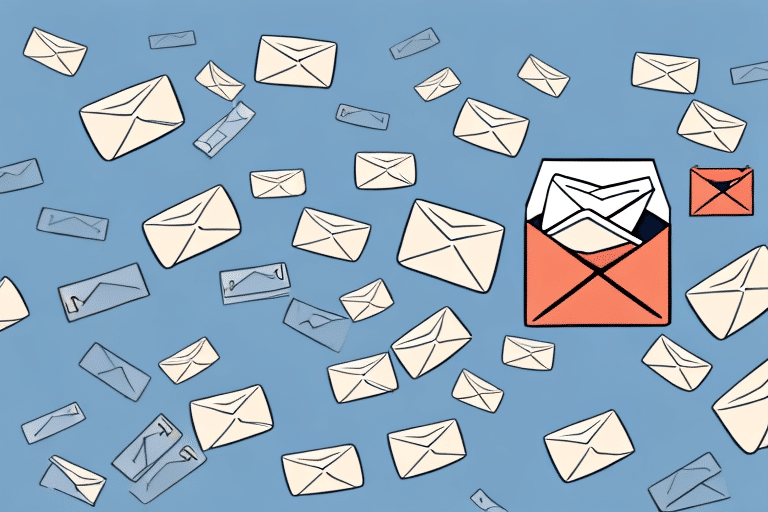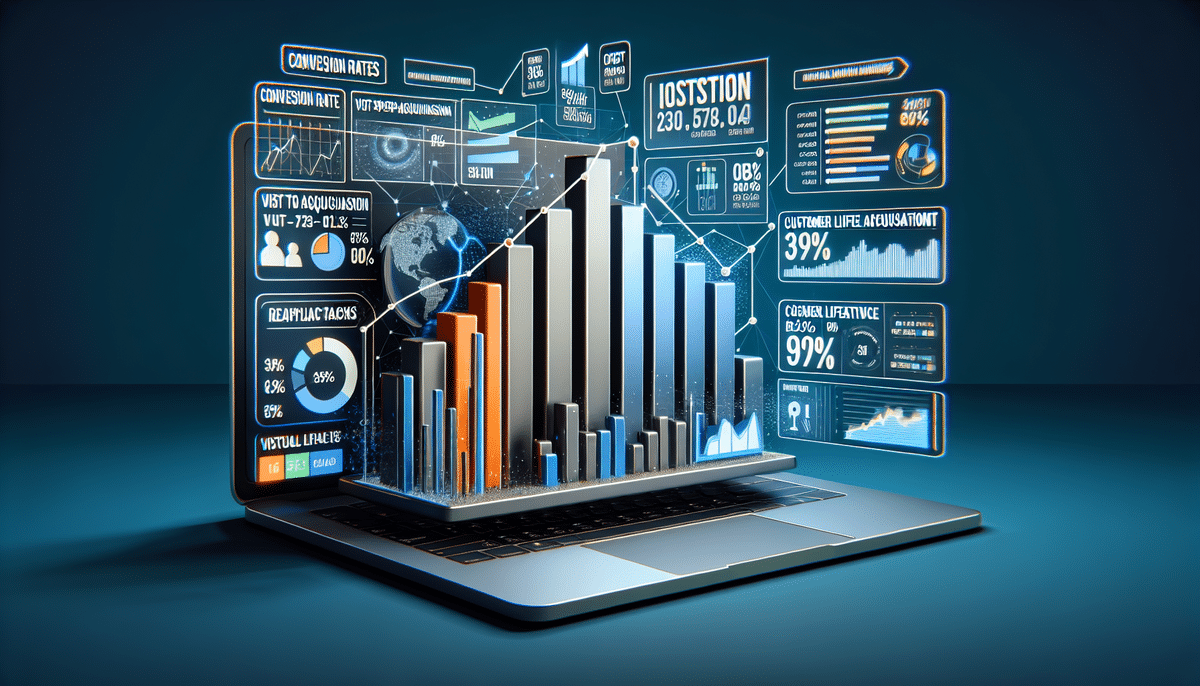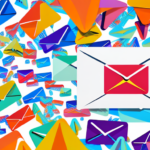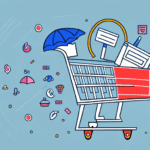Email Marketing Mistakes You Should Avoid - Tips and Tricks
Email marketing has become one of the most powerful tools businesses use to reach their customers. With a potential ROI of up to 4400%, it's a highly lucrative method of digital marketing. However, many businesses make mistakes that can be costly, resulting in low engagement, high unsubscribe rates, and a damaged reputation. This article discusses common email marketing mistakes you should avoid and offers tips and tricks to optimize your email marketing campaigns.
1. Beware of Suspicious Sender and Domain Names
The email sender name and domain name play a critical role in determining whether a recipient will open or delete an email. Using suspicious or unfamiliar sender names and domain names can make your emails appear as spam or phishing attempts. Ensure that your sender name and domain reflect your business and brand identity. This strategy helps build trust with your recipients and ensures your emails do not end up in the spam folder.
How to Identify and Avoid Phishing Emails
Phishing emails are fraudulent attempts to steal sensitive information such as credit card details, login credentials, or personal data. These emails often disguise themselves as legitimate communications from reputable companies. To identify phishing emails, look for:
- Spelling and grammar errors
- Suspicious sender names and domain names
- Requests for sensitive information
- Offers that are too good to be true
Do not click on any links or download attachments in suspicious emails.
Additionally, verify the sender's email address carefully. Phishing emails may have email addresses similar to legitimate companies but with slight variations, such as support@paypa1.com instead of support@paypal.com.
Keeping your software and security systems up to date is crucial for protection against phishing attempts. Install updates for your operating system, web browser, and antivirus software as soon as they become available to prevent hackers from exploiting vulnerabilities in your system.
2. The Power of Rare Email Campaigns
Infrequent email campaigns can be as effective as frequent ones. Rare email campaigns often have higher engagement rates because they feel more special and exclusive. Sending fewer emails can help you avoid overwhelming your subscribers with too many messages.
When and How to Use Infrequent Email Marketing
Infrequent email campaigns can promote product launches, special offers, or events that require extra attention. They can also be used to trigger engagement initiatives such as surveys or polls, which require more thought and effort from subscribers. However, be cautious not to send too few emails, as this can result in lower engagement rates and conversion rates.
Another advantage of rare email campaigns is that they help you stand out from competitors. With many businesses bombarding subscribers with daily or weekly emails, sending a rare email can make your brand more memorable and increase the chances of subscribers taking action. Rare email campaigns can also re-engage subscribers who have become inactive or disengaged with your brand by sending special offers or exclusive content to remind them of your brand's value.
3. Subtle Promotion: The Key to Effective Email Marketing
Promotional emails are essential for encouraging customer engagement and driving sales. However, they can sometimes feel too pushy or spammy, resulting in low engagement. Crafting promotional emails in a subtle and strategic manner can help prevent this.
How to Craft Promotional Emails That Don't Sound Like Ads
Effective promotional emails should appeal to recipients' needs and interests. Focus on how your product or service can solve a problem or fulfill a desire, rather than simply promoting its features. Use eye-catching graphics and concise language to convey your message. Balance promoting your offerings with providing value to recipients to avoid sounding overly salesy.
Personalization is also crucial. Use the recipient's name and tailor the content to their interests and past behavior through segmentation and targeting based on demographics, purchase history, and website activity. Personalized emails have higher open and click-through rates, as they feel more relevant and valuable to the recipient.
4. The Art of Concise Writing: Making Your Emails More Effective
An email that is too lengthy or unstructured can quickly lose the reader's attention and interest. Effective email marketing requires concise and well-structured writing.
Tips for Writing Clear and Succinct Emails
- Use bullet points or numbered lists to break down complex ideas into manageable chunks.
- Ensure each paragraph focuses on a single idea or purpose, making it easier for the recipient to follow.
- Keep sentences and paragraphs short and informative to improve readability and comprehension.
Another critical aspect is a clear and concise subject line. It should accurately reflect the email content and grab the recipient's attention. Proofread emails before sending to avoid grammatical errors or typos that could detract from the message.
Personalize your emails by addressing the recipient by name and using a friendly, conversational tone to establish a connection and increase engagement. Ensure to include a clear call to action that encourages the recipient to take a specific action, such as clicking a link or replying to the email.
5. Say More with Less: The Benefits of Shorter Emails
Shorter emails often have higher engagement rates than longer ones, as recipients are more likely to read and respond to concise and digestible emails.
Shorter emails save time for both the sender and the recipient. With the increasing volume of emails people receive daily, concise emails are more efficient and easier to process. They also show respect for the recipient's time and attention. However, ensure the email still conveys necessary information and does not become unclear or confusing by being too brief.
6. Avoiding the Pitfalls of Lengthy Emails
Longer emails can provide in-depth information or make complex arguments, but they can also be overwhelming and cause recipients to lose interest. To avoid the pitfalls of lengthy emails, focus on a single idea or topic and use concise language to convey the message. Include links to additional information or resources for recipients who want to learn more.
How to Edit Your Emails for Maximum Impact
- Break down emails into sections and review each for clarity, accuracy, and tone.
- Use tools like Grammarly or Hemingway Editor to enhance language and style.
- Read your email aloud to check its flow and coherence.
7. Leveraging Visuals Effectively
Including images or videos can break up text and make the email more visually appealing. However, ensure that you use high-quality visuals relevant to the message you are conveying. Visuals should complement the content, not distract from it.
Optimizing images for quick loading times is essential to prevent slowing down email delivery. Use compressed image formats and include alt text for accessibility and better engagement.
8. Personalization and Segmentation
Personalized emails—addressing the recipient by name and tailoring content to their interests or previous interactions with your brand—increase engagement and make the recipient feel valued. Segment your email list based on demographics, purchase history, and engagement levels to deliver more targeted and relevant content.
According to a study by Campaign Monitor, segmented email campaigns can generate up to a 760% increase in revenue.
Conclusion
Email marketing can be a highly effective tool for reaching customers, generating leads, and driving sales. However, avoiding common mistakes and optimizing your email marketing campaigns requires careful planning, creativity, and attention to detail. Incorporate these tips and tricks to avoid pitfalls and maximize the potential of your email marketing campaigns.
By focusing on sender credibility, strategic campaign frequency, subtle promotion, concise writing, effective use of visuals, and personalization, you can enhance your email marketing efforts and achieve better results.






















